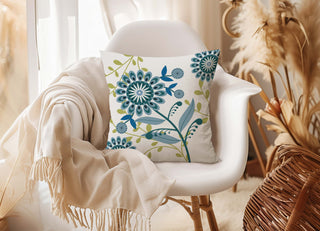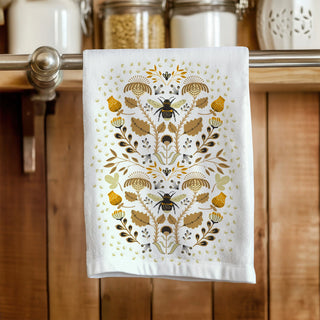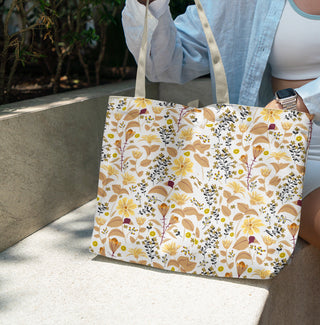For many years, the only thing I knew about linen fabric was, "My gosh it's wrinkly!" Honestly, I rarely ever thought about the materials in my clothing and household goods. But I knew even less about sustainable textiles.
When I started this website and my journey to leading a more sustainable and eco friendly life, I realized that I had a lot to learn. I was fairly ignorant about the different types of fabrics and even more so about these materials called sustainable textiles.
What Does sustainable Mean? What Are Sustainable Textiles?
Sustainable textiles are fabrics produced in ways that minimize environmental impact, conserve resources, and promote ethical labor practices. These textiles are often made from organic or recycled materials (called eco-friendly materials). They are processed using methods that reduce waste, energy consumption, and water usage. The goal of sustainable textile production is to create fabrics that are both high-quality and environmentally friendly, where materials are reused and recycled rather than discarded.
("Sustainable Textiles: The Future of Eco-Friendly Fabric Production" Aug 2024)
Sourcing My Cotton Linen Pillow Covers
So, in choosing which products to feature in my website shop, I looked for the most sustainable fabrics offered by my print on demand suppliers. Print on demand suppliers offer products that are printed up and shipped only when a customer places an order. There is no inventory.
I knew I wanted to create designs for throw pillows, but I wanted the fabric to be free of synthetic fabrics. (Synthetic textiles are those made from human-created fibers using chemical processes.) Fortunately, all of my print on demand suppliers had some eco-friendly product offerings.

Contrado Print on Demand
One of my print on demand suppliers is a company called Contrado. After looking through their products, I settled on decorative pillow covers made from a linen and cotton blend fabric.
I was fortunate to have found Contrado during my very extensive search for products to offer. Contrado has a clear sustainability mission. They use EU sourced fabrics and they always make sure they know where they are coming from. And this helps them be accountable for the impact that their textiles have on the planet.
If you want to know more about Contrado's commitment to sustainability, you can read more about it in their blog. Contrado also offers a wide range of eco friendly textiles. On their site, you'll find quite a few natural fabrics, including these:
- Linen
- Cotton
- Hemp
- Bamboo
- Jute
-
Silk
Linen is a natural fabric made from flax fibers. The flax plant is considered a sustainable crop, requiring less water than cotton and leaving behind little waste.
Cotton fabric has been produced for generations, too. Manufacturers typically create fabric blends to combine the best qualities of each fabric.
A linen and cotton blend gives us a balance of breathability, comfort, and durability. Cotton adds softness and reduces the wrinkling that happens with linen alone.
I think that a linen and cotton blend is a wonderful choice for decorative pillows. But let's look at all the benefits that come from this happy union.
Benefits of Linen and Cotton Blends
So, maybe you've shied away from using linen and cotton blends in the past. And, certainly, synthetic based blends are everywhere and it's difficult to avoid them. But after looking at the amazing benefits provided by this fabric blend, perhaps you'll consider snuggling up to a pillow made from linen and cotton (wink).
- Cotton and linen are soft, absorbent and breathable. These fabrics allow body heat to escape. This means it keeps you cooler than polyester does.
- Pilling won't be a problem like it is with nylon and polyester blends.
- Both linen and cotton are hypoallergenic. So this fabric is a perfect choice for people with allergies and respiratory conditions such as asthma.
- Cotton and linen fabric isn't clingy like synthetic fabrics.
- This fabric blend tends to wrinkle less than pure linen, making it more practical for most textile products.
- Linen and cotton blends are generally easier to care for than pure linen, requiring less ironing. (I hate to iron!)
- Linen has natural antibacterial qualities that can inhibit bacterial growth.
- Linen has antistatic properties, making it less likely to attract dust.
- Cotton and linen blends can withstand frequent washing and drying without losing its shape or color.
- Linen generally biodegrades faster than cotton. But both fabrics are biodegradable and offer environmental benefits compared to synthetic materials.
Caring for Linen and Cotton Blends
But what about shrinkage, you ask? Well, yes, cotton, and especially linen, are known for shrinking during washing, but when properly cared for this problem can be lessened. So, don't wash them in hot water. And, because only 5% linen is used in the fabric blend for my decorative pillows, shrinking is minimized.
I'm not a perfect environmentalist by any means. That's why my blog is titled, "The Ever Repentant Tree Hugger." I look for ways to reduce my carbon footprint, but also try not to lose sleep over any missteps along my journey to a greener life. Including only sustainable and eco-friendly products in my shop is just another way that I can contribute to caring for this planet.
Thanks for stopping by my garden!
References Used
Main image photo by Kristen Plastique from Unsplash
"Sustainable Textiles: The Future of Eco-Friendly Fabric Production" August 2024
"Can Certain Fabrics Increase Body Odour? Guide To Anti Odour Fabrics" - Cotton Monk May 2022
"Cotton Incorporated Tests Hypoallergenic Claims" October 28, 2021
"Linen Fabric Properties, Characteristics and More" January 31, 2024
"Textile Fibers" Everything You Need to Know" 2025 June
"Answering All of Your Cotton Biodegradability Questions" July 2017
"Material Guide, How Sustainable is Linen" Isobella Wolfe July 2023





